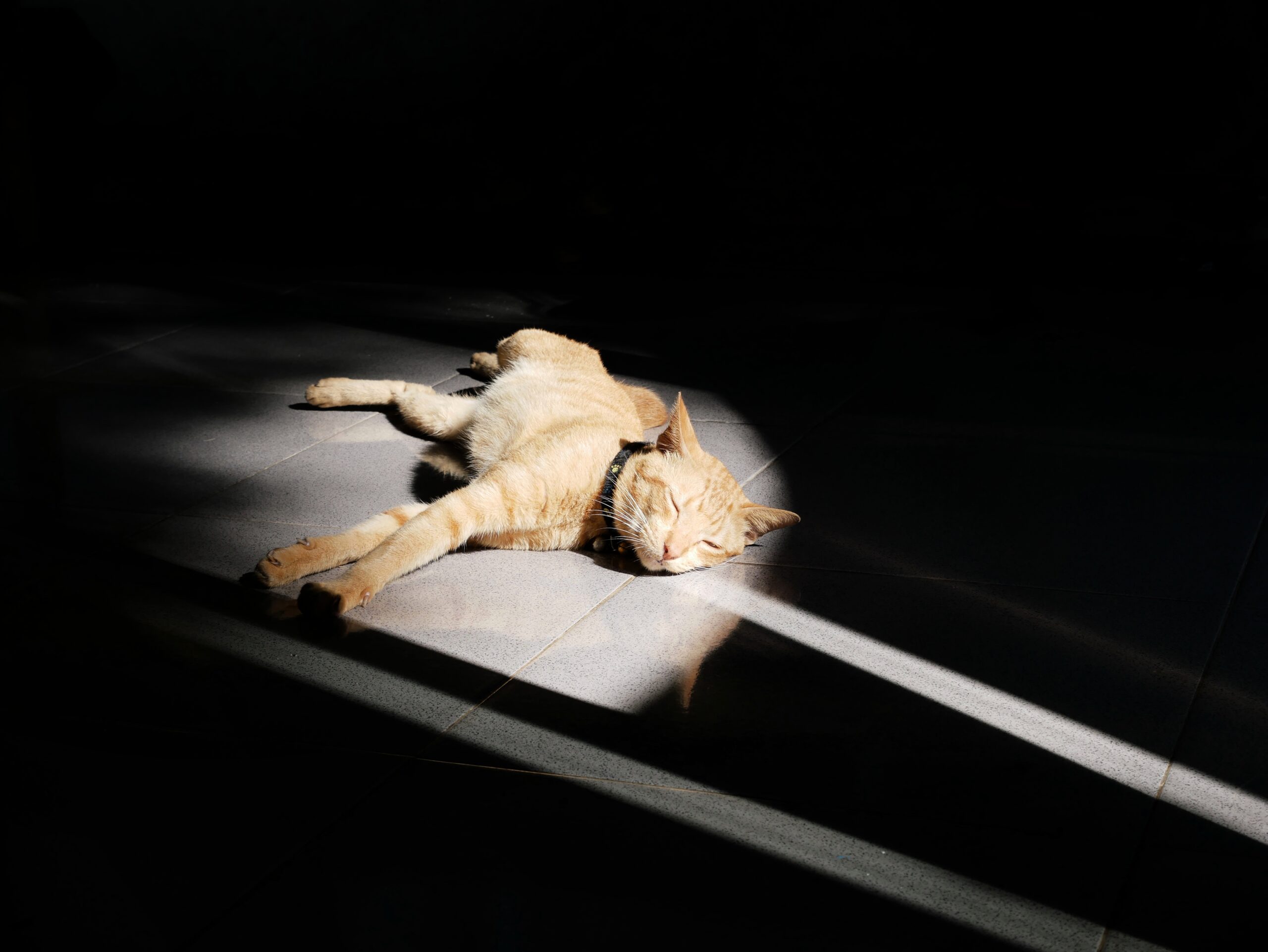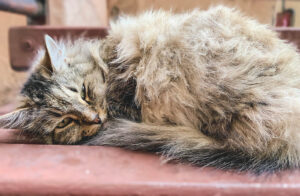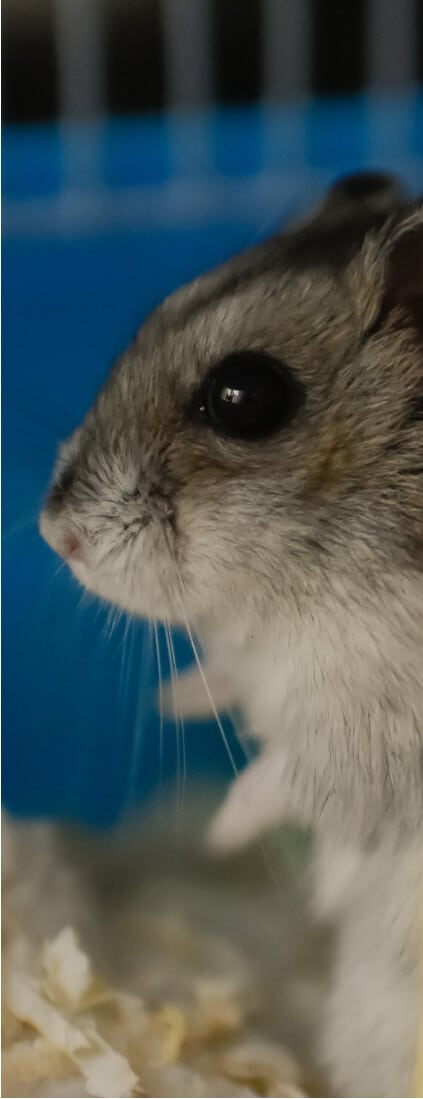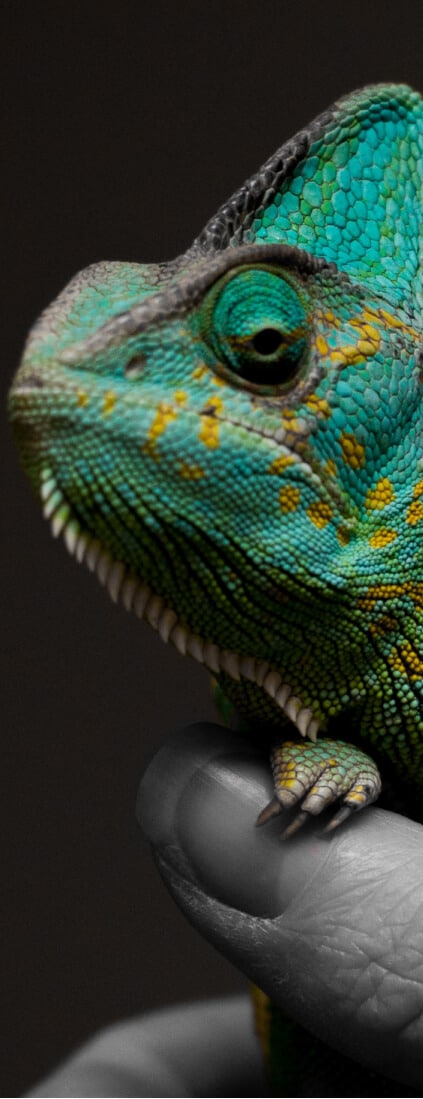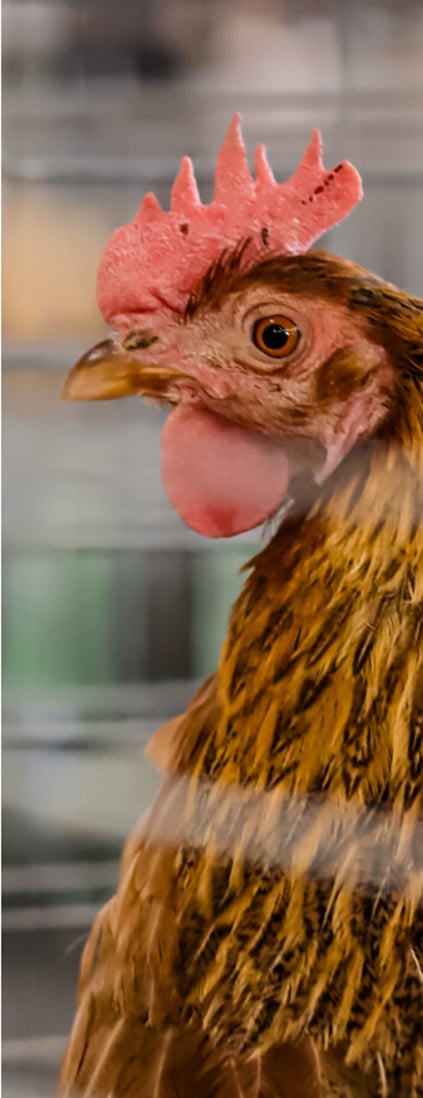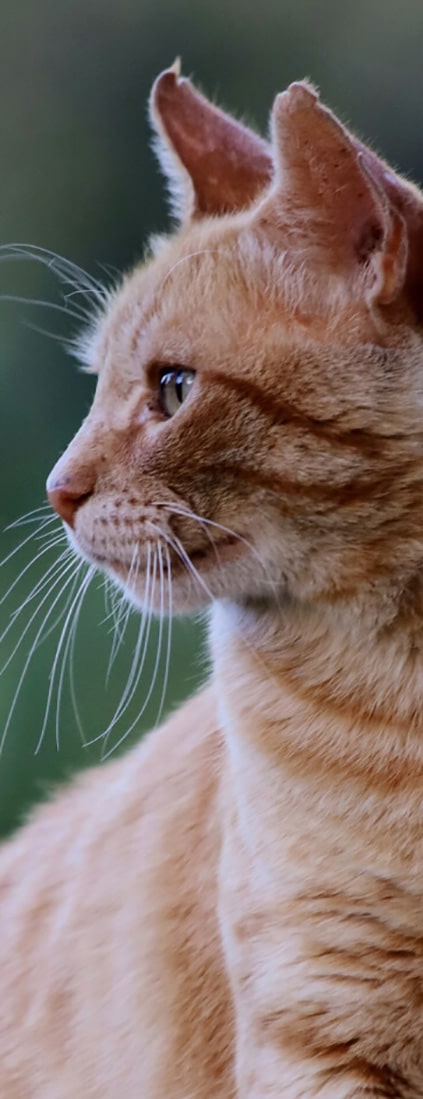If your cat has been diagnosed with intestinal cancer, you’re likely facing one of the most heartbreaking decisions: When is the right time to say goodbye?
The truth is, this can be the most difficult decision. But there are signs that will tell you when your cat’s quality of life is significantly reduced or absent, and when that happens, choosing in-home euthanasia may be the most compassionate option you can give them.
How Different Types of Intestinal Cancer Affect Your Cat
Lymphoma (Most Common Type)
- Lymphoma is the most common form of intestinal cancer in cats. It affects the lymph nodes and digestive system.
- This cancer spreads quickly, often causing vomiting, diarrhea, and weight loss in the early stages. Even with treatment options, symptoms can return.
- Without treatment, the life expectancy is typically 4-6 weeks. With chemo, many live 6–12 months, and some even longer, depending on how early it’s caught and how they respond.
Adenocarcinoma (Slow-Growing)
- Adenocarcinoma is a slower-growing type of cancer affecting the intestines and is more common in older cats.
- This type may take months to show signs. Cats often experience occasional vomiting, constipation, or weight loss before the cancer progresses.
- With treatment, cats can live for 1-2 years, but without treatment, the life expectancy is generally around 3-6 months.
Mast Cell Tumors (Rare but Aggressive)
- Mast cell tumors are rare and can spread aggressively. These are fast-moving and can cause sudden GI symptoms, especially if they spread.
- Treatment may buy time, but comfort can fade quickly.
9 Signs Your Cat is Suffering
1. Sudden or Noticeable Weight Loss
It may feel like your cat is shrinking before your eyes. You may notice their bones, hips, spine, and shoulders are becoming more visible. As their appetite fades, malnutrition sets in — leaving them weaker and more vulnerable.
2. Refusing Food, Even Favorites
If your cat won’t eat even their favorite treats or cat food with appetite stimulants, it’s a strong indication that something is wrong. A missed meal isn’t unusual, but extended loss of appetite often indicates signs of pain, nausea, and/or discomfort.
3. Ongoing Vomiting or Diarrhea
Recurring gastrointestinal issues, especially if there’s blood, can quickly lead to dehydration and exhaustion. For a cat already weakened by cancer, without alleviating this constant stress on their body, this will only lead to further decline.
4. Labored or Shallow Breathing
Difficulty breathing that seems shallow, fast, or strained, even when resting, can signal pain, anxiety, or fluid buildup. This sign is one of the clearest indicators of distress and necessitates immediate medical attention.
5. Trouble Using the Litter Box
If your cat is having accidents or can’t reach the litter box, it may be due to extreme fatigue, mobility loss, or incontinence. For a naturally clean animal, this can cause distress beyond the physical.
6. Pain That Cannot Be Controlled With Medication
Cats hide pain instinctively. If you notice vocalization, aggression when touched, or persistent hiding despite pain medication, this is an indication that your cat is suffering significantly.
7. Low or No Interest in Affection
A once-social cat that avoids being held or touched may be too tired or uncomfortable to connect. This kind of behavior change isn’t rejection — it’s often a sign they’re conserving energy or struggling silently.
8. Unusual Sounds: Crying, Yowling, or Groaning
Some cats become more vocal under stress, distress and/or when they are in pain. It can be their way of expressing discomfort and should warrant further investigation as to the cause.
9. Something Just Feels… Different
Sometimes, it’s not just one thing. It’s the way they walk, the way they sleep, the way they look at you. If something in your gut says, “they’re not themselves,” trust that feeling. You’re probably right.
Still Not Sure? Try this Quality of Life Scale
If you’re struggling to decide, try using this tool that many veterinarians use to help pet parents make the decision. The HHHHHMM Scale, developed by veterinary oncologist Dr. Alice Villalobos, evaluates the different aspects of your cat’s wellbeing:
- Hurt: Is your cat in pain despite medication?
- Hunger: Is your cat eating normally?
- Hydration: Can your cat drink and stay hydrated?
- Hygiene: Can they groom themselves or stay clean?
- Happiness: Do they still respond to affection, toys, or people?
- Mobility: Can your cat move comfortably?
- More Good Days Than Bad: What’s the overall pattern?
Rate your cat on a scale of 1 to 10, with 10 being the best on each of these measures. Add up your scores from all seven categories. A total above 35 generally suggests a good quality of life. If your cat scores below 35, especially for several days in a row, it may be time to discuss end-of-life options with your veterinarian. While this is not an exact measurement, it may help you to put your cat’s quality of life into some perspective and think about some elements that you had not fully considered.
Some cat owners choose hospice care to extend comfort for as long as possible. Euthanasia is the kindest option when suffering becomes more frequent than peace. There’s no exact timeline as each cat and the progression of their disease are unique.
What to Do When You’re Stuck on the Decision
It is very normal to feel paralyzed by the decision to move forward with euthanasia, as watching your cat decline is heartbreaking, and on the other hand, letting them go is just as difficult. To help gain perspective, don’t try to go it alone – there are resources to turn to that will help you think through the decision when it seems impossible.
- Talk to Your Veterinarian—Schedule a visit with a DVM to discuss your cat’s condition and symptoms. Your vet can help clarify what your cat is experiencing and how the illness is likely to progress.
- Consider In-Home Euthanasia—When it’s time, in-home euthanasia can offer a calmer, more comfortable goodbye. Your cat can remain in familiar surroundings, curled up in their favorite spot, with you right beside them. Many families find it less stressful, for both the cat and themselves, than going to a vet’s office. In-home euthanasia providers are specialists in end-of-life care and have extensive expertise and experience helping guide families through this difficult time.
- Give Yourself Grace—Feeling unsure, heartbroken, or even guilty is normal. This difficult decision is an act of love. Talk to others who have been through similar experiences. Take the time you need to emotionally prepare, and know that you’re not alone.
Letting go is never easy, and it’s never supposed to be. But allowing your cat to pass peacefully, surrounded by love, is one of the kindest things you can do, even if it doesn’t feel like the best decision.
If you’re in the Portland, Oregon area, feel free to reach out to us.
We’re here to listen, answer your questions, and guide you through euthanasia and cremation options every step of the journey.
